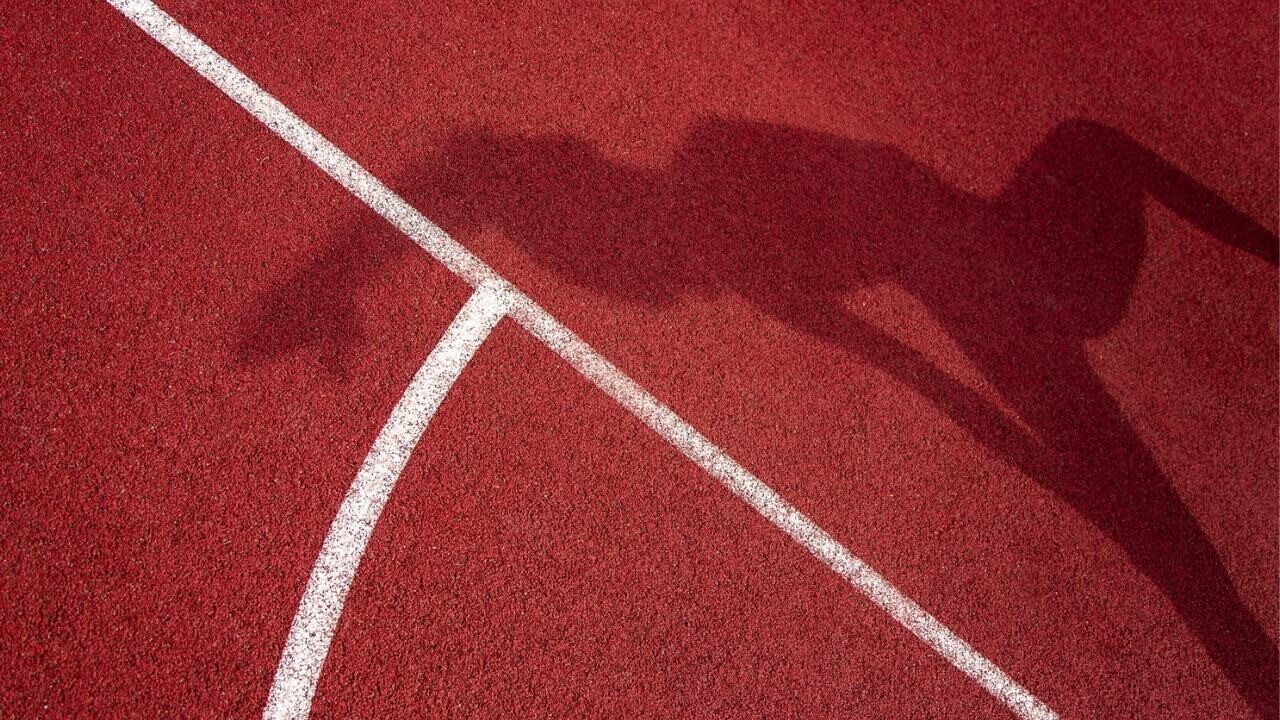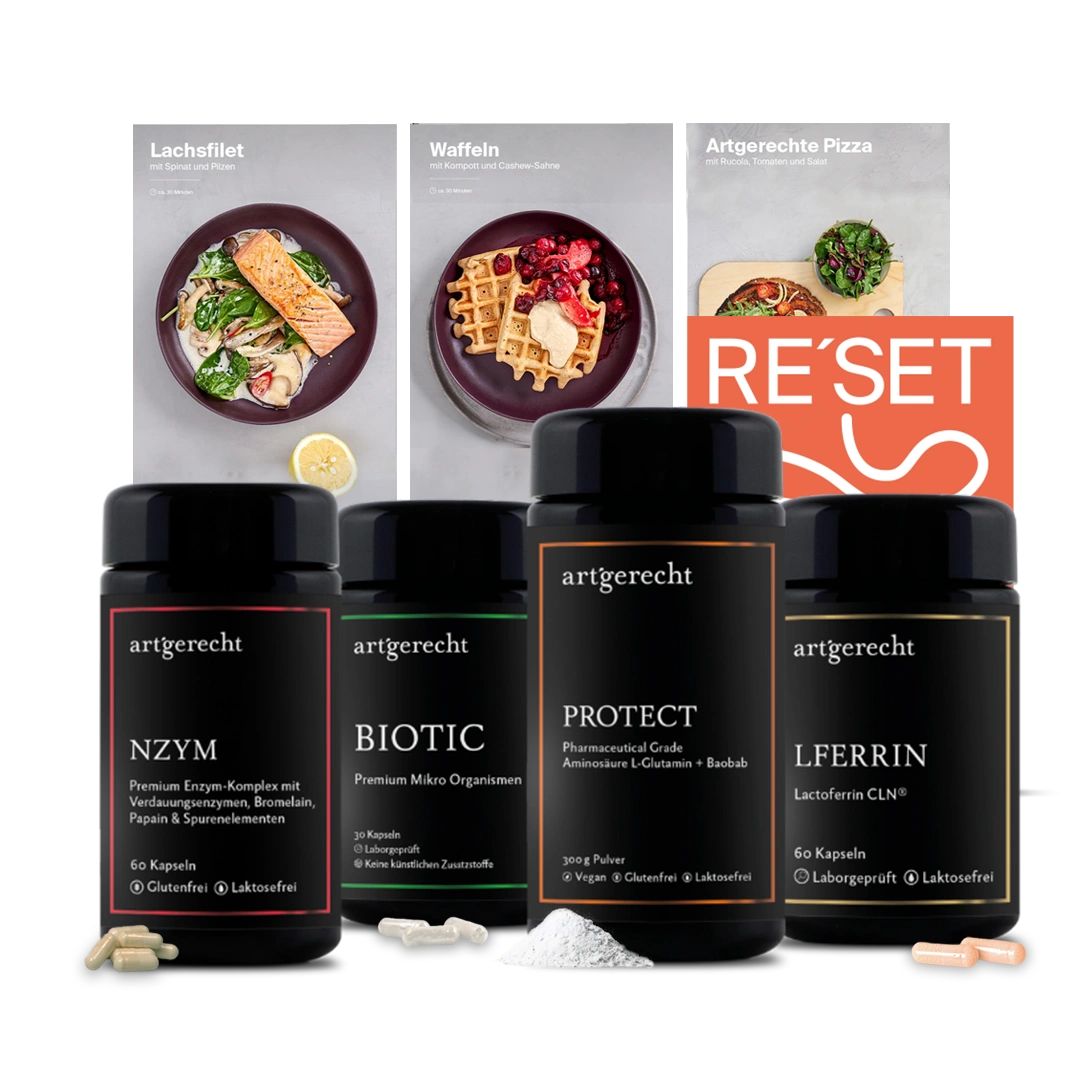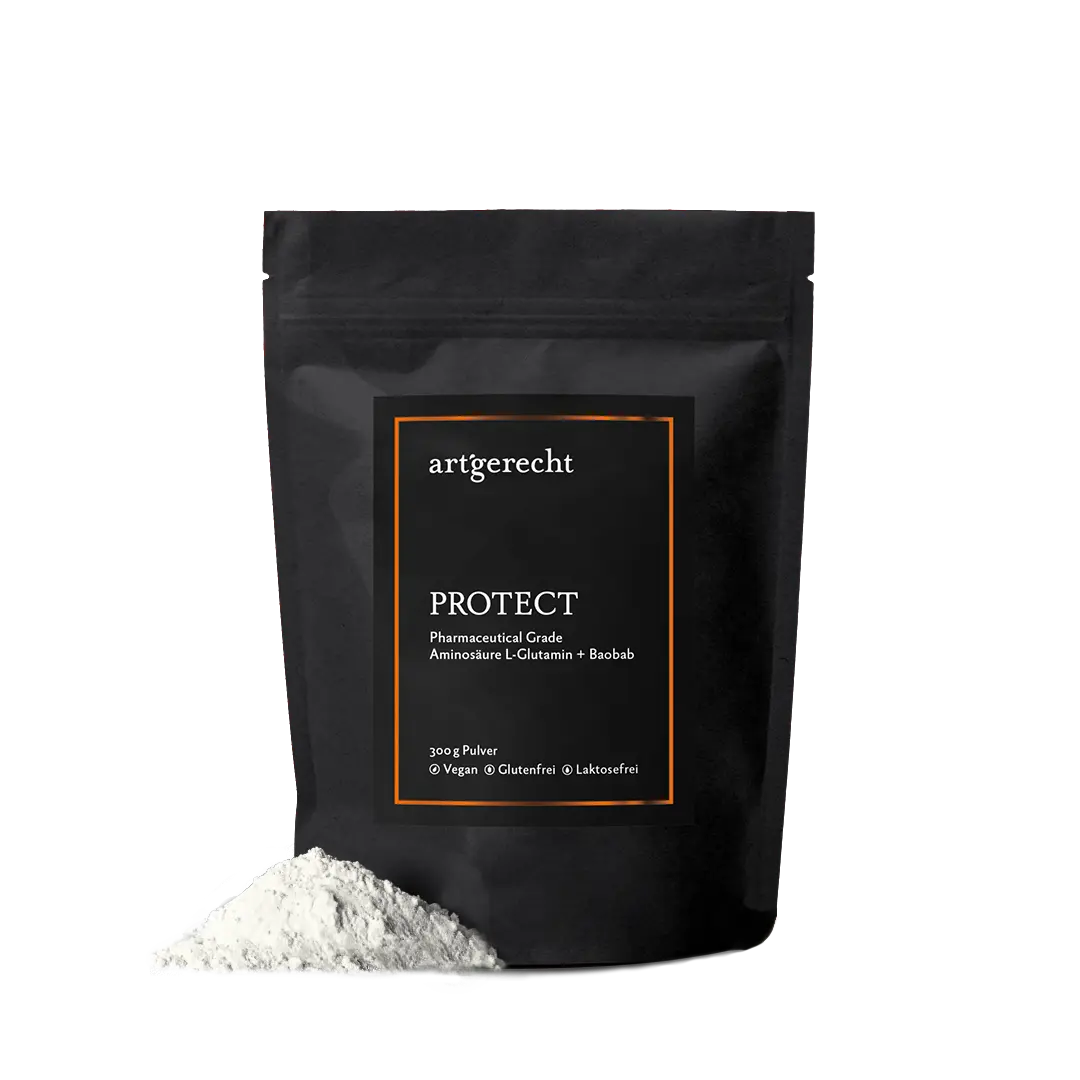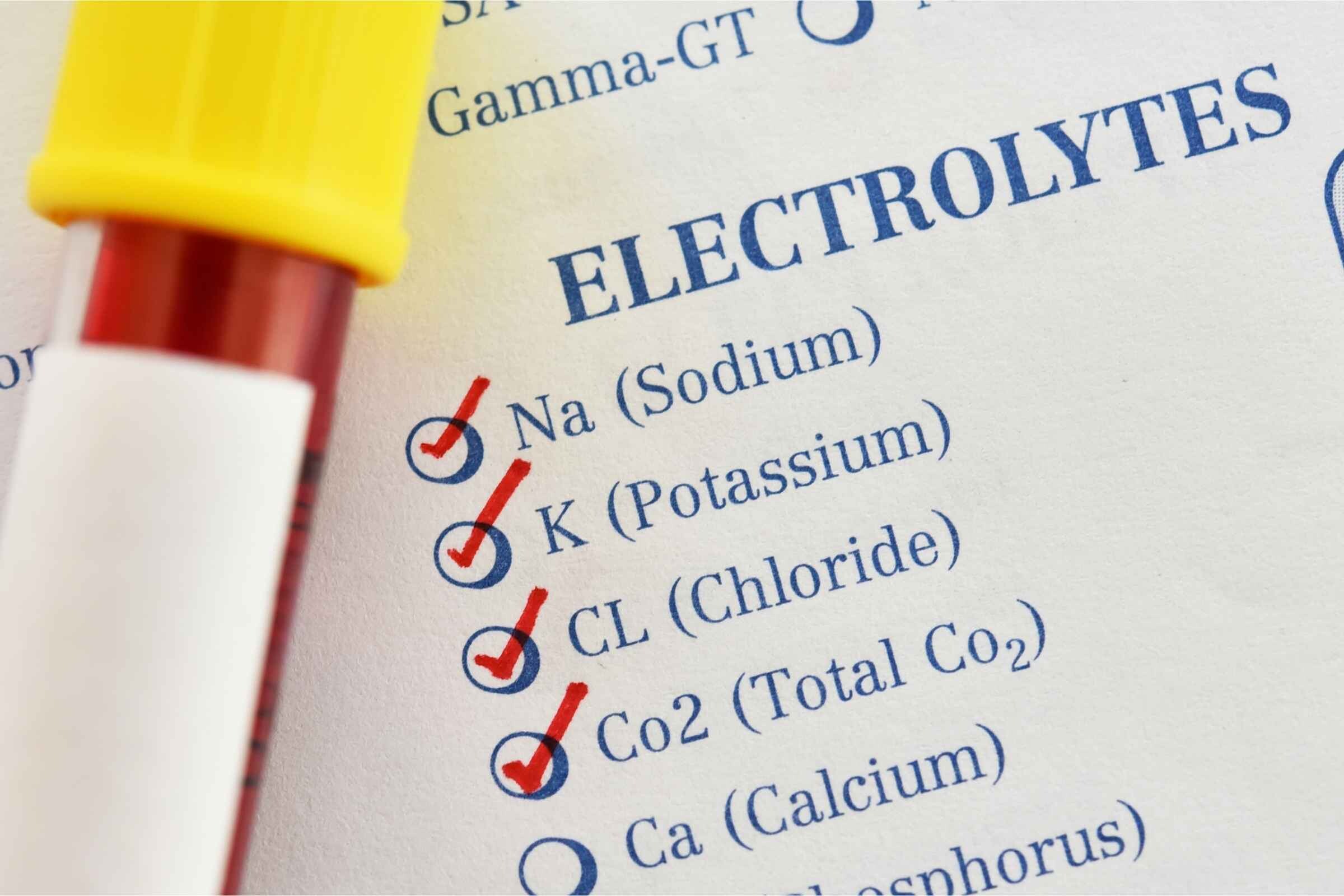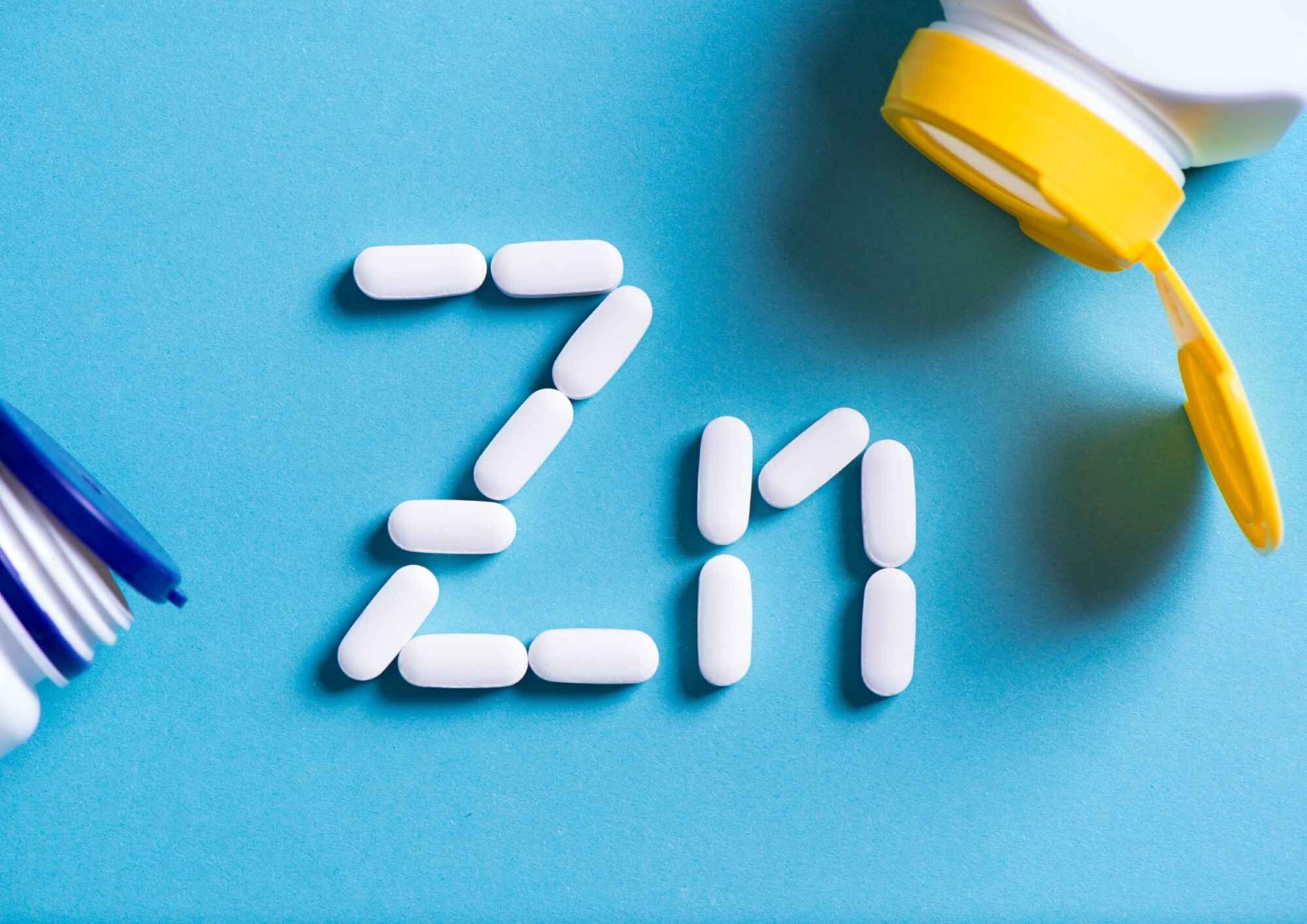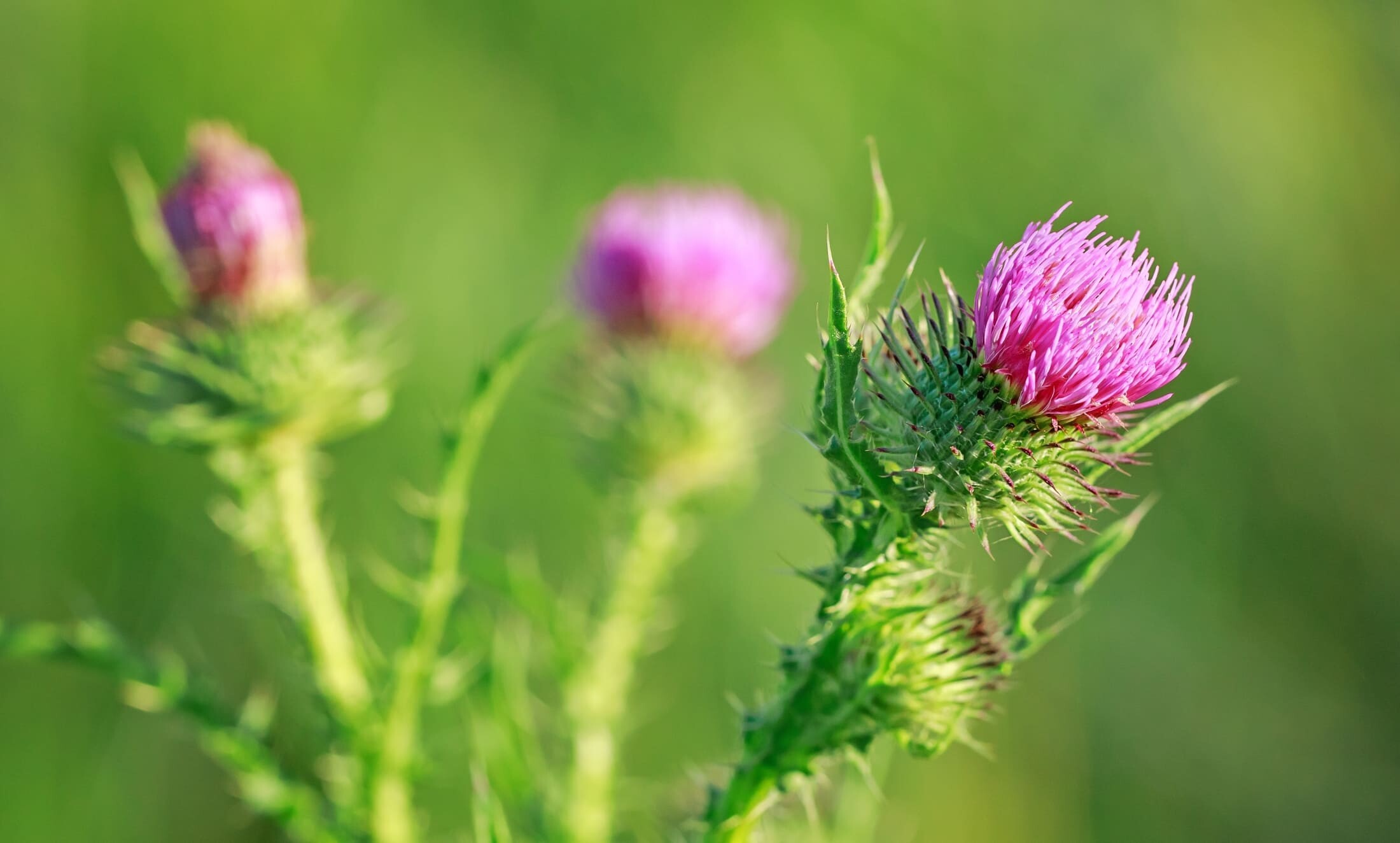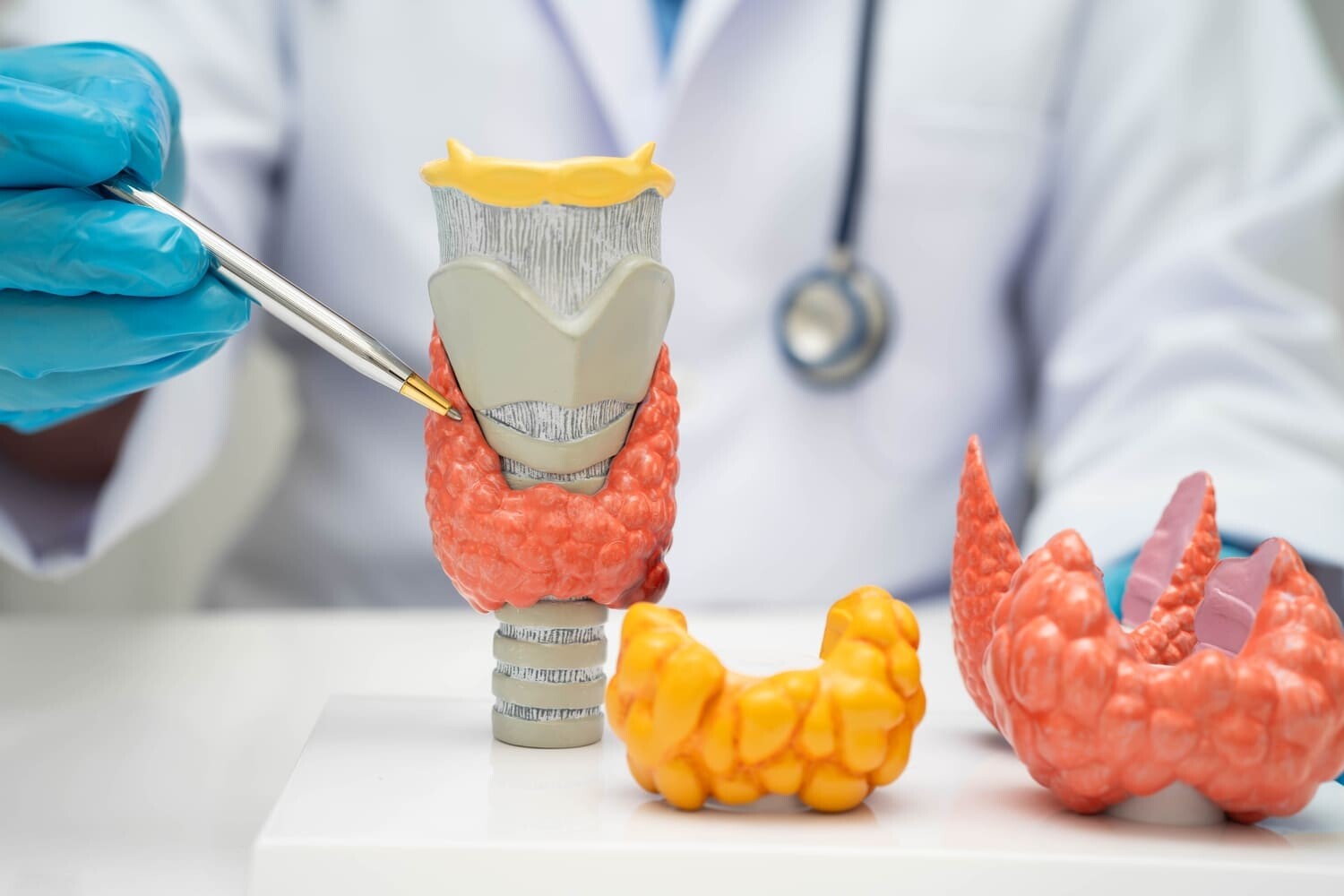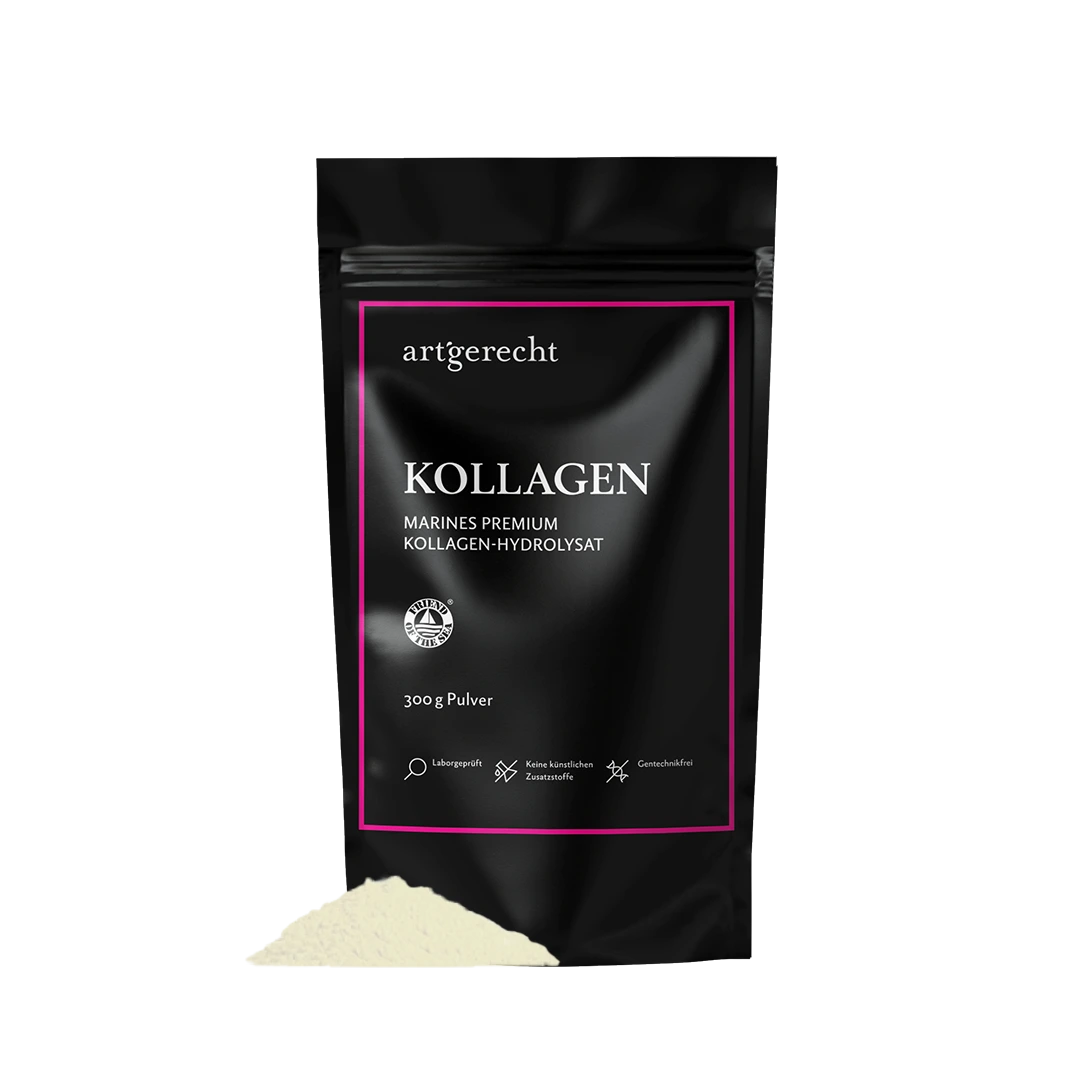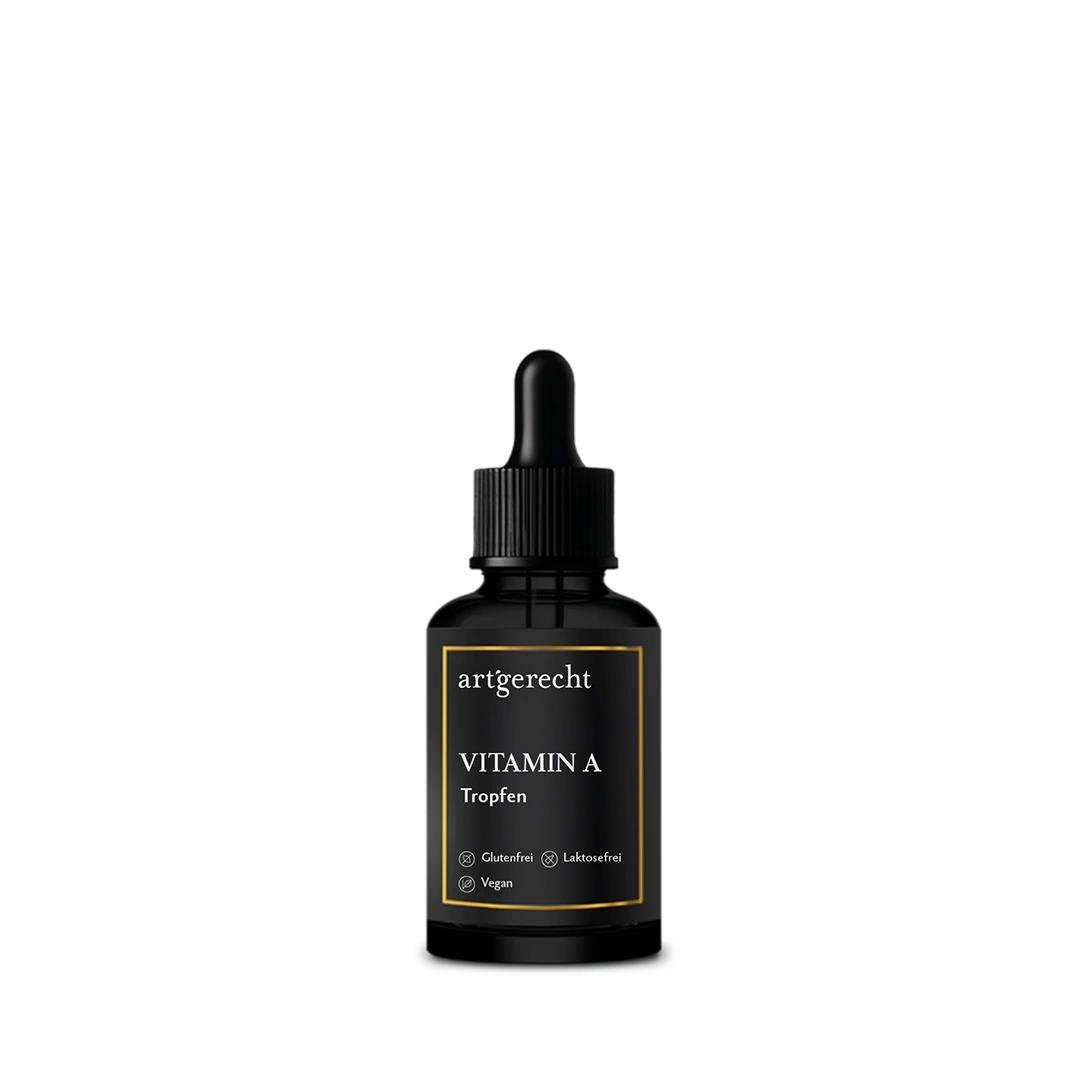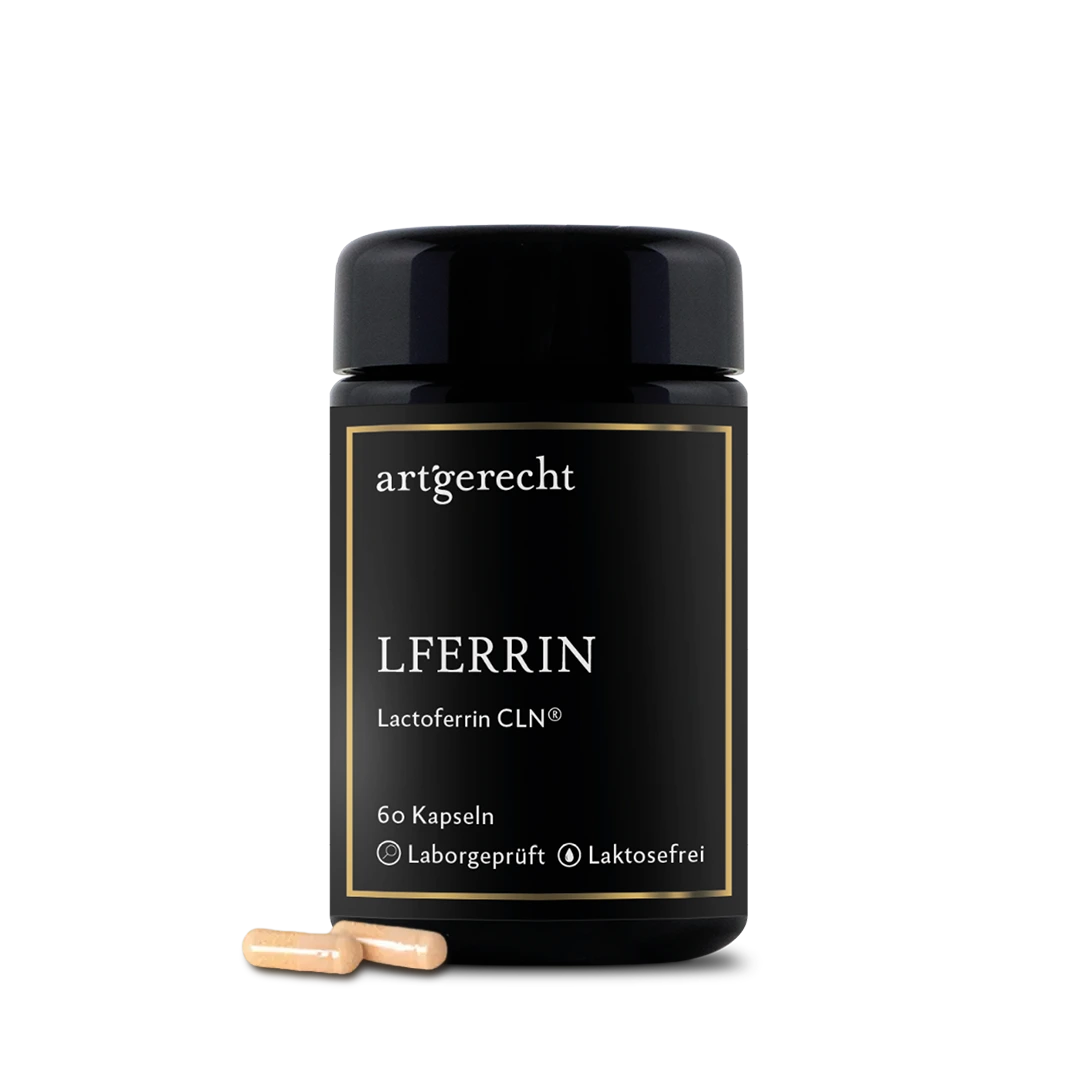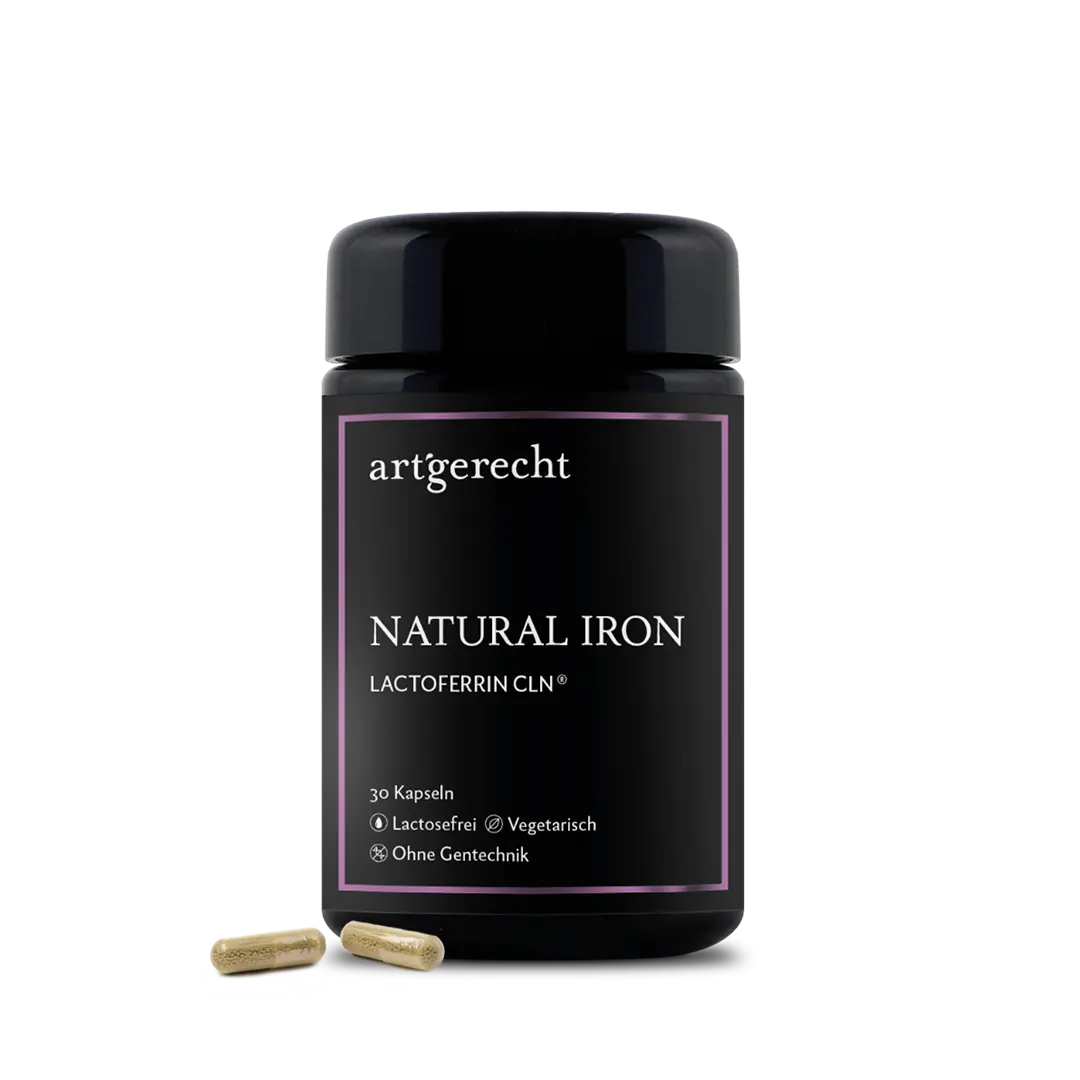With regard to athletic performance, a healthy gut is particularly important for endurance athletes. With a contact area of over 500 square meters, the intestine houses around 80 percent of all immune cells and performs many important tasks for health. For example, it provides protection against harmful influences from the outside world and is closely linked to the intestinal microbiome. The digestive tract also ensures the nutrient supply of the entire organism.
The influence of the gut on athletic performance
Although many athletes are now aware of the importance of gut health, despite its great potential, it is still not taken into account.great potential – especially for training and competition preparation – there is often little room for it. Yet the topic could not be more topical: it is estimated that 30-50 percent of endurance athletes are affected by gastrointestinal complaints.[1] These are generally harmless and pose no health risk, but often affect competition results. In some cases, these problems even lead to athletes no longer being able to participate in sporting events or finish them successfully. Symptoms often range from pain in the upper abdomen to reflux and heartburn, burping, bloating and stomach cramps through to nausea or vomiting. In the intestinal region, it can lead to stabbing pain and diarrhea – in exceptional cases even to intestinal bleeding.
Scientists primarily discuss three main mechanisms for the development of intestinal problems during exercise:
Sport and intense physical exertion lead to reduced blood flow to the intestines. This is because during acute stress all other functions are less important for survival. Eating or digesting, reproducing or regenerating therefore play no role in survival. However, this mechanism means that nutrients and liquids are absorbed more slowly. This can lead to intestinal problems and reduced performance, as the body - and in particular the muscles - cannot be sufficiently supplied with energy. Heat and the duration of training or competition as well as the mechanical effects of running can also influence the intestinal function. [2]
2. increased-thickness-of-the-gut
Due to the reduced blood flow during intense exercise, the permeability of the intestinal wall changes. The increased permeability of the intestinal wall (intestinal permeability) is responsible for this;This is responsible for substances that should not otherwise enter the bloodstream, so-called endotoxins (toxins from bacteria in the intestine), increasingly passing through the barrier. This is often referred to as „leaky gut“. Increased stress during training, but also in competitive situations, can destroy protein structures and damage connections between the intestinal cells (tight junctions). The immune system located in the intestine becomes active, leading to inflammatory reactions and the associated symptoms. [3] Irrespective of physical exertion, „modern dietsäErnährungweise“ and chronic stress are also associated with a „Leaky Gut“. [4]
3. changing-the-microbiome
Themicrobiome consists of around 100 trillion microorganisms and makes an important contribution to our health. Basically, the more diverse the microbiome, the better for the organism. The microorganisms, mainly bacteria, are important for the breakdown of food. As symbionts (good bacteria) of the human organism, they also have nutrient-forming tasks, e.g. for the formation of various vitamins. Nowadays, it is even known that the microbiome influences behavior and decision-making. [5]
The good news is that the microbiome of athletes is fundamentally diverse. [6] But here too, too high stress levels and lack of regeneration phases dysbiosis – i.e. incorrect colonization. This also increases the inflammatory situation in the gut and is associated with gastrointestinal symptoms such as stomach and intestinal complaints. [7]
Was tun für mehr Darmgesundheit im Ausdauersport?
In addition to specific measures on the day of the competition and the 24 to 48 hours before, long-term interventions are also important for good gut health. In addition to the right diet, support with supplements can also help.
The right diet for endurance sports:
In terms of intestinal health, a diet characterized by varied foods and an adjusted meal frequency (frequency of meals) is a decisive factor. The more diverse the foods, ideally from organic cultivation, the better, as they provide the nutrient substrate for a broad intestinal microbiome. For example, fibrous substances from vegetables such as root vegetables or cereals provide important nutrients for probiotic bacteria. fermented foods are also helpful for the microbiome. The right meal frequency, often referred to in this context as „intermittent fasting“, is a much-discussed topic.
To regenerate damaged intestinal cells and thus the cell-cell connections (tight junctions), the Aminosäure L-glutamine can be used. The use of L-glutamine is frequently discussed and investigated due to its positive influence on regeneration and solubility of intestinal cells. [8] L-glutamine is a proteinogenic amino acid and the most abundant non-essential amino acid in the human body.
A gluten-free diet and a low-FODMAP diet can also be helpful to support intestinal health or in the case of existing intestinal problems. This is because gluten and the resulting gliadin can impair the function of intestinal cell connections (tight junctions). [9] In studies with people who do not suffer from celiac disease, i.e. gluten intolerance; a gluten-free diet led to an improvement in general symptoms in 84% of those surveyed. [10]
Low-FODMAP nutrition: What is it actually?
FODMAPs are fermentable carbohydrates. If FODMAPs are poorly absorbed in the small intestine (malabsorption), they enter the large intestine. The digestion of FODMAPs can lead to fermentation processes here. This fermentation is called fermentation. Bacteria in the large intestine break down the FODMAPs. The reduction of FODMAPs (fermentable oligo-, di-, monosaccharides and polyols) can relieve symptoms such as abdominal pain, bloating and diarrhea. Lactose (found in dairy products), fructose (found in fruit, honey and many sports products) and galacto-oligosaccharides (as found in high-fructose products) can help to alleviate symptoms such as abdominal pain, bloating and diarrhoea.strong>fruits) are among the FODMAPS – however, the amount in each individual food varies. Also fructans (storage carbohydrates in plants), which are contained in wheat, rye and barley , are also FODMAPs. Foods that are frequently consumed by athletes and have a high FODMAPs content include dairy products (lactose), dates, wheat, oats, almonds, cashews, dried fruit and vegetables.nuts, dried fruit, apples and apple juice, cherries, fructose (a common ingredient in sports drinks and gels), honey and agave syrup. According to a study, avoiding or reducing these foods also benefited healthy people who do not suffer from celiac disease but are prone to intestinal complaints. [11] A meta-analysis confirms the improvement of functional gastrointestinal complaints through a low-FODMAP diet.
Right digest:
If the digestive tract is less supplied with blood, this also reduces the release of digestive enzymes. However, in order to break down nutrients properly, we need enzymes for the macronutrient groups – i.e. carbohydrates, proteins and fats. Especially after intensive exercise, the amount of enzymes may not be sufficient. [12], which is why a „recovery shake“ or a meal eaten immediately afterwards may not be properly absorbed. This can cause digestive problems. Zinc is a useful supplement here, as it can balance the acid-base balance and support the normal function of breakdown of macronutrients.
Prä- and probiotics:
In addition to prebiotic and probiotic foods, supplements or food supplements are also a way of supporting intestinal health. The intake of probiotics üover longer phases of preparation makes perfect sense. This was shown in a study that examined supplementation in recreational marathon runners compared to the placebo group. The intensity and frequency of gastrointestinal complaints were reduced. [13] A previous study has also shown that the combination of probiotics and prebiotics is useful for inexperienced long-distance triathletes./strong>, as these serve as nutrients for good bacteria and can therefore counteract the development of inflammatory processes. [14] So-called biotics, i.e. fiber-rich foods are found in vegetables and fruit. Also interesting in this context is the protein lactoferrin, which has probiotic properties and at the same time deprives bad bacteria of their nutrients. [15]
Conclusion:
If you want to do something sustainable for your gut and thus achieve more performance in endurance sports, you can already achieve a lot with small measures. The intact intestinal barrier represents a protective barrier through which our organism is in contact with the environment. This protective barrier can be specifically maintained with the correct diet and nutritional supplements such as glutamine „dense“. The healthy intestinal flora is the basis for health and can be supported with prand probiotics and the protein lactoferrin.
Nonetheless, these points are only possible causes and interventions that should be discussed and adapted individually with nutritionists and doctors.
Literature:
- De Oliveira EP, Burini RC, Jeukendrup A. Gastrointestinal complaints during exercise: Prevalence, etiology, and nutritional recommendations. Sport Med. 2014;44(SUPPL.1):79-85. doi:10.1007/s40279-014-0153-2
- Cheung SS, Sleivert GG. Multiple triggers for hyperthermic fatigue and exhaustion. Exerc Sport Sci Rev. 2004;32(3):100-106. doi:10.1097/00003677-200407000-00005
- Zuhl M, Schneider S, Lanphere K, Conn C, Dokladny K, Moseley P. Exercise regulation of intestinal tight junction proteins. Br J Sports Med. 2014;48(12):980-986. doi:10.1136/bjsports-2012-091585
- Bischoff SC, Barbara G, Buurman W, et al. Intestinal permeability – a new target for disease prevention and therapy. BMC Gastroenterol. 2014;14(1):1-25. doi:10.1186/s12876-014-0189-7
- Foster JA, Rinaman L, Cryan JF. Stress & the gut-brain axis: Regulation by the microbiome. Neurobiol Stress. 2017;7:124-136. doi:10.1016/j.ynstr.2017.03.001
- Clarke SF, Murphy EF, OSullivan O, et al. Exercise and associated dietary extremes impact on gut microbial diversity. Gut. 2014;63(12):1913-1920. doi:10.1136/gutjnl-2013-306541
- Mohr AE, Jäger R, Carpenter KC, et al. The athletic gut microbiota. J Int Soc Sports Nutr. 2020:1-33.
- Bin Wang, Zhenlong Wu, Yun Ji, Kaiji Sun, Zhaolai Dai and GW. L -Glutamine Enhances Tight Junction Integrity by Activating CaMK Kinase 2 – AMP-Activated Protein Kinase Signaling in Intestinal Porcine. J Nutr. 2016:501-508. doi:10.3945/jn.115.224857.501
- Lammers KM, Lu R, Brownley J, et al. Gliadin Induces an Increase in Intestinal Permeability and Zonulin Release by Binding to the Chemokine Receptor CXCR3. Gastroenterology. 2008;135(1):194-204.e3. doi:10.1053/j.gastro.2008.03.023
- Stellingwerff T, Klimstra M. Exploring the Popularity, Experiences and Beliefs Surrounding Gluten-Free Diets in Non-Coeliac Athletes. Int J Sport Nutr Exerc Metab. 2014.
- Marsh A, Eslick EM, Eslick GD. Does a diet low in FODMAPs reduce symptoms associated with functional gastrointestinal disorders? A comprehensive systematic review and meta-analysis. Eur J Nutr. 2016;55(3):897-906. doi:10.1007/s00394-015-0922-1
- Konturek PC, Brzozowski T, Konturek SJ. Stress and the Gut : Pathophysiology , Clinical Consequences. Am J Physiol. 2011;62(6):591-599. http://www.ncbi.nlm.nih.gov/pubmed/22314561.
- Pugh JN, Sparks AS, Doran DA, et al. Four weeks of probiotic supplementation reduces GI symptoms during a marathon race. Eur J Appl Physiol. 2019;119(7):1491-1501. doi:10.1007/s00421-019-04136-3
- Roberts JD, Suckling CA, Peedle GY, Murphy JA, Dawkins TG, Roberts MG. An exploratory investigation of endotoxin levels in novice long distance triathletes,and the effects of a multi-strain probiotic/prebiotic,antioxidant intervention. Nutrients. 2016;8(11):1-18. doi:10.3390/nu8110733
- Vega-Bautista A, de la Garza M, Carrero JC, Campos-Rodríguez R, Godínez-Victoria M, Drago-Serrano ME. The impact of lactoferrin on the growth of intestinal inhabitant bacteria. Int J Mol Sci. 2019;20(19). doi:10.3390/ijms20194707

